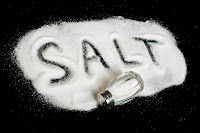Update on My-Ice-Cream


As most of you know, I Sous-Vide Process my Ice-Cream Base. I have been using 150f for 2 hours, but after doing some research and using science as my reference, I've decided to use 162℉ for about 70-80-Minutes. It takes about 35-40 minutes for the base to reach 160℉ (I used a probe), and the additional time is to pasteurize and cook and denature the proteins. Pastueration at 160f takes less than 10 secs. From what I have read, holding 162℉ for about 25-30 minutes improves the overall texture. The denaturation of proteins and their ability to hold on to more water makes the temp work well. Think about it for a moment; the more water that binds to the protein, means smaller ice crystals. This also improves whey protein foaming and emulsification. What does that mean? It means that the foam formation improves texture and helps the Ice-Cream hold on to air that increased during the churning, which we know is overrun. With this Time and Temperature, all the planets line up (smoother & less icy), and the denatured proteins give the Ice-Cream ample Foam, which improves the air retention and the emulsification of all the proteins.
What's cool, IMO about Sous-Vide-Processed Ice-Cream, is the evaporation is reduced to zero. Traditional heating methods can over thicken the custard base through evaporation, and I think with the SV version, you get the thickness without worrying too much about water evaporation. It's almost idiot-proof. Of course, if you SV-Process to long, it will get too thick. I need to recheck the Time to Temp, but I believe it was about 35-Minutes to get to 160f maybe another 10-12 min to get to 162f. So with that, all you need is 70-80 Total Minutes. Getting it to 160℉/162℉, of course, is based on the overall volume of the base.
Some evaporation is to be expected in traditional Ice-Cream making, which aids in foaming and thickening. Most instructions say to cook the custard for 15-25 minutes at about 170f until you can coat the back of a spoon. This means you can run your finger down the end of the spoon, and the indentation remains. The indentation will not stay if the liquid is too thin. The indentation only stays if the liquid is thick enough. But there is a danger also. Over thickening and too much evaporation. This is the beauty of Sous-Vide Ice-Cream. You cannot over thicken (sticking to times), and you cannot over reduce through evaporation.
EXPECT UPDATE 8.25.2020
With Sous-Vide Ice-Cream, there is no evaporation, but there is thickening. Most Ice-cream Recipes take into account a percentage of moisture evaporating but with SV there is none. Converting a regular recipe for Sous-Vide is easy (optional). Subtract 5-7% of the dairy and add that percentage of skim milk powder, and you can make any traditional Ice-Cream Recipe Sous-Vide-Ready.
The use of Lyles Golden Syrup is another new addition (optional- add to my recipes). Golden syrup is inverted sugar, and when added in small amounts to the Ice-Cream could be a game-changer. The addition of the inverted sugar, which is less sweet than sucrose, will ensure less of the water will form into ice. The Ice-Cream will be softer when frozen, smoother, and creamier. The percentage to use is roughly 20% of the sugar used. So, in other words, if your recipes call for 200g fo sugar, use 40 g of the syrup (Total 240g).
Foaming- Ice cream has a foam structure composed of a fat globule network, ice crystals, a serum phase, and air cells. This foam structure is formed in the freezing process which both freezes a portion of the water and adds air to increase the volume of the product.



Comments
Post a Comment